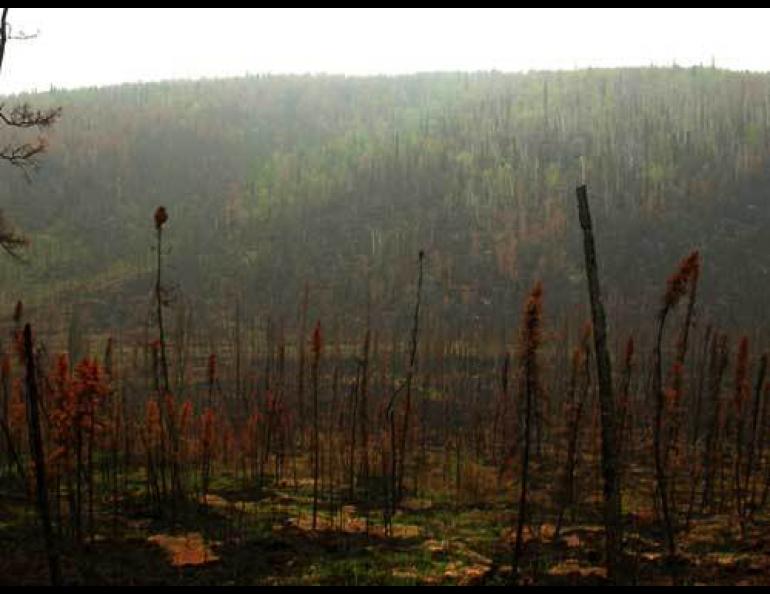
Alaska exports not always welcomed
Three recent studies show links between Alaska and birds in California, air quality in Texas, and icebergs in Antarctica.
Spring 2005 was the first time in decades that Cassin’s auklets nesting on the Farallon Islands didn’t have baby auklets, and some scientists think weather in the Gulf of Alaska might be part of the reason why.
Russ Bradley works for PRBO Conservation Science in Petaluma, California. The organization devoted to, among other things, preservation of the Farallon Islands that are 27 miles west of the Golden Gate Bridge in San Francisco. In May 2005, biologists noticed that a species of small gray sea birds known as Cassin’s auklets abandoned their breeding colony on the southeast island. “For the first time in 35 years, reproductive success was zero,” the scientists wrote in a recent issue of Geophysical Research Letters.
The auklets also did poorly in British Columbia. Bradley said the timing of a shift in location of the Aleutian Low, a major Alaska weather feature in the Bering Sea and North Pacific, may be to blame for the failed breeding season on the Farallon Islands.
“The Pacific jet stream shifted south by over 1,000 miles during early May,” Bradley said. The Aleutian Low then moved south from the Gulf of Alaska and altered ocean currents as far south as California.
“Instead of the usual northwest flow of the California Current that creates a productive upwelling (and stirs up plankton favored by the auklets), we had southerly winds,” Bradley said. “Almost all breeding birds abandoned their eggs.”
Birds on California islands aren’t the only creatures touched by things that happened in Alaska. Alaska’s record wildfires in 2004 sullied the air over Houston, Texas. Gary Morris was an atmospheric scientist at Rice University that summer, when he sent up weather balloons to check the concentration of ozone, a problem in Houston because of the area’s petrochemical plants and large population of commuters. In the Journal of Geophysical Research, Morris documented a large pulse of ozone and carbon monoxide that had wafted upward from burned Alaska trees and tundra on July 12, 2004. He backtracked the gases using a computer model and satellite images that showed the smoke’s seven-day trip from Alaska.
“We weren’t intending to look at forest fires,” Morris said over the phone from his new office at Valparaiso University in Indiana. “The surface layer (of air) in Houston is highly polluted, but ozone levels usually go down as the balloon rises above two kilometers. On those two days, the ozone readings above two kilometers were higher than those at the surface.”
Other scientists spanned half the distance of the globe to chase down another Alaska event. Douglas MacAyeal of the University of Chicago and Emile Okal of Northwestern University reported in Geophysical Research Letters that a storm in the Gulf of Alaska cracked up a giant iceberg off the coast of Antarctica.
On Oct. 27, 2005, on a clear, calm day, an iceberg 60 miles long and more than 18 miles wide broke into six pieces. The scientists used data from seismometers on the iceberg to backtrack the waves.
“We looked in the Pacific Ocean and there, (8,300 miles away), six days earlier, was the winter season’s first really big, nasty storm . . . in the Gulf of Alaska,” MacAyeal said in a University of Chicago Chronicle story written by Steve Koppes. “We looked at the wave-buoy records in Hawaii and Alaska. We saw that the waves in Alaska were about 35 feet tall and then two days later they were down to 15 feet as they passed Hawaii on their way south.”
When the Alaska waves reached the iceberg, they moved it up and down one-half inch and side to side by four inches. That slight motion, exported from Alaska, was enough to crack up the iceberg, MacAyeal said.




